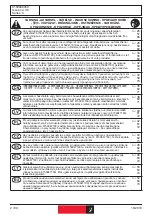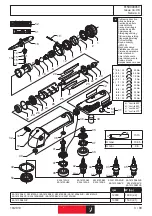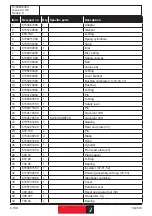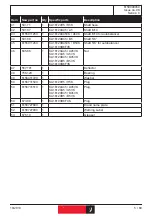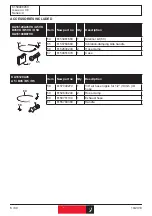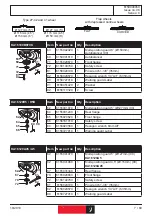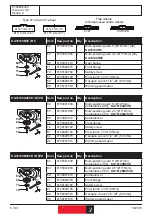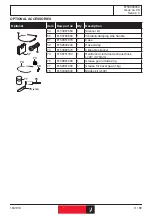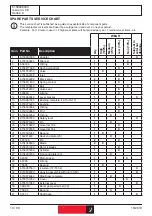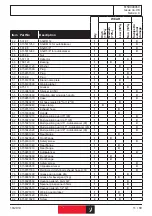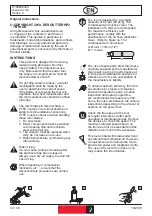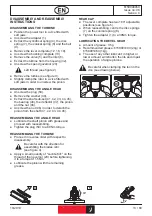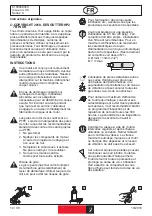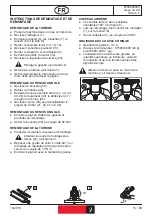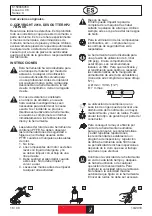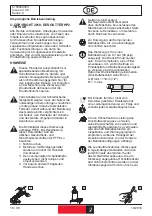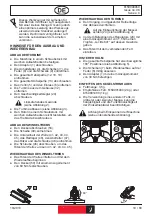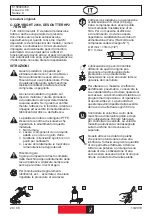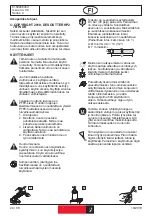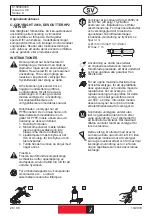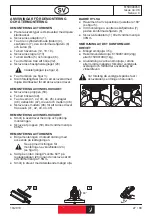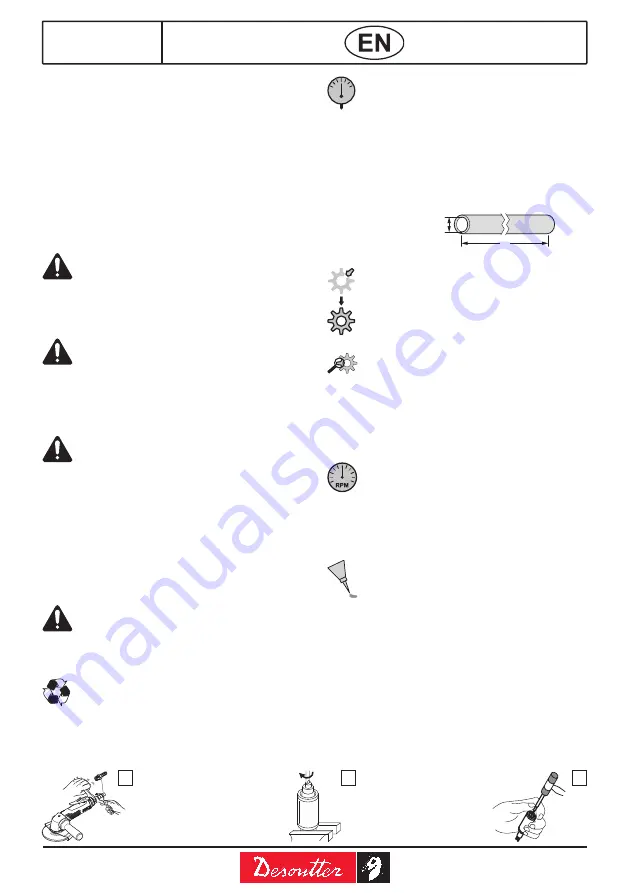
10/2010
12 / 80
6159948450
Issue no: 06
Series: C
Original instructions.
© COPYRIGHT 2010, DESOUTTER HP2
7BW UK
All rights reserved. Any unauthorized use
or copying of the contents or part thereof
is prohibited. This applies in particular to
trademarks, model denominations, part numbers
and drawings. Use only authorized parts. Any
damage or malfunction caused by the use of
unauthorised parts is not covered by Warranty or
Product Liability.
INSTRUCTIONS
This product is designed for removing
material using abrasives. No other
use permitted. For professional use
only. Before servicing the power tool,
the supply of compressed air must be
disconnected or shut off.
If a grinding wheel is broken, a careful
investigation shall be made by the
user to determine the correct cause.
If the failure occurs while the tool is in
operation, the wheel manufacturer and
the tool manufacturer should be notified
promptly.
The rotor blades in this tool have a
PTFE content. The normal health and
safety recommendations concerning
PTFE must be observed when handling
these rotor blades.
1. Do not smoke.
2. Motor components must be washed
with cleaning fluid and not blown
clear with an air line.
3. The silencer must be replaced when
dirty, do not clean and re-use.
4. Wash hands before commencing any
other activity.
Risk of icing.
Ice can cause continued running after
the start lever has been released.
Always use a dry air supply to avoid the
risk of icing.
When disposing of components,
lubricants, etc … ensure that the
relevant safety procedures are carried
out.
The tool is designed for a working
pressure of 6.3 bar (90 psig). The
compressed air must be clean. The
installation of a filter is recommended.
For maximum efficiency and
performance, comply with the
specification of the air hose (antistatic
hose). (Refer to figure no.1 for
compressed air connection).
A: Ømini = 13mm (1/2")
B: 7 m max.
A
B
The use of spare parts other than those
originally supplied by the manufacturer
may result in a drop in performance or
in increased maintenance and level of
vibration and in the full cancellation of
the manufacturer’s liability.
To obtain maximum efficiency from the
pneumatic tool, preserve its features
and avoid repeated repairs, a routine
inspection and repair programme
are recommended at least every 500
hours, the intervals between the various
inspections depending on the amount of
exertion on the power tool.
Check the free speed of the tool
at regular intervals and after each
operation or maintenance task. Remove
the abrasive to check the speed. The
maximum allowed speed shown on
the tool must not be exceeded and the
vibration level must not be excessive.
This tool is fitted with blades which can
operate without lubricated air. However,
a small amount of oil allows the tool to
provide full power and lengthens its life.
The use of dry air with no trace of oil
may reduce the life of blades.
1
2
3


